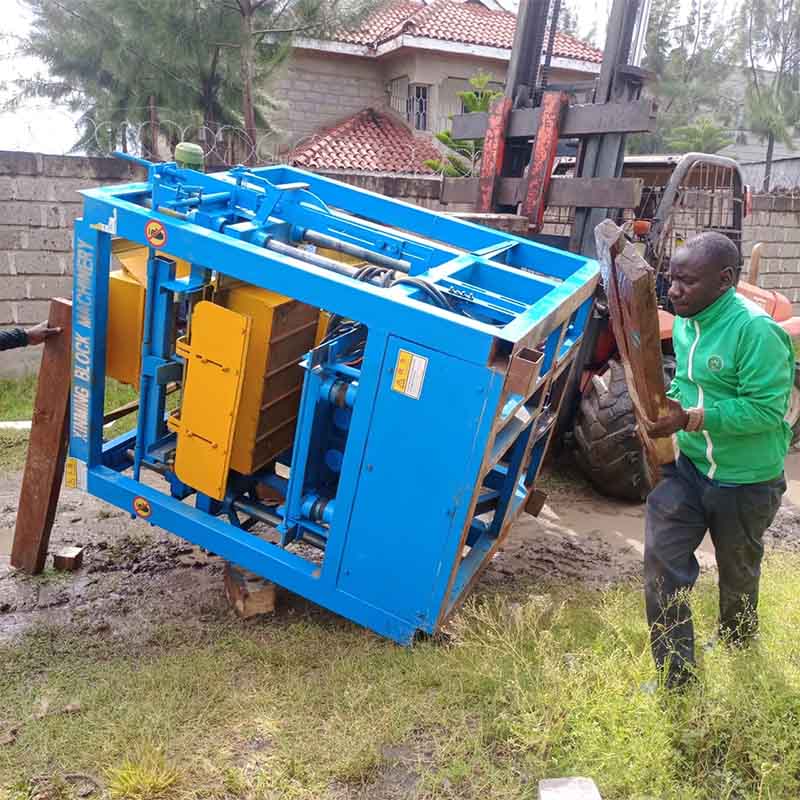
Image source Aiweibrickmachine
Title: Environmental Impact Assessment of Full-Automatic Block Production
Introduction
As the construction industry places increasing emphasis on sustainable practices, it is essential to assess the environmental impact of manufacturing processes. Full-automatic block production, while efficient and technologically advanced, also raises considerations regarding resource usage, energy consumption, and waste generation. This article examines the environmental impact of full-automatic block production, exploring key aspects and potential strategies to minimize its ecological footprint.
### 1. **Raw Material Extraction and Consumption:**
– **Assessment of Raw Material Sources:**
Evaluate the environmental impact of sourcing raw materials for block production. Consider the sustainability of aggregates, cement, and other components. Opt for responsibly sourced materials to minimize ecological disruption.
– **Material Efficiency in Production:**
Analyze the efficiency of material usage during the manufacturing process. Full-automatic block machines should be optimized to minimize waste, ensuring that raw materials are utilized efficiently and reducing the environmental impact associated with extraction and processing.
### 2. **Energy Consumption and Efficiency:**
– **Energy Source Analysis:**
Assess the energy sources used in the full-automatic block production process. Transitioning to renewable energy sources, such as solar or wind, can significantly reduce the carbon footprint associated with energy consumption.
– **Energy-Efficient Technologies:**
Implement and continually update energy-efficient technologies in full-automatic block machines. This includes energy recovery systems, optimized power consumption features, and intelligent controls that adjust energy usage based on production needs.
### 3. **Emission Reduction Strategies:**
– **Emission Monitoring:**
Monitor and assess emissions generated during the full-automatic block production process. Implement measures to reduce air pollutants and greenhouse gas emissions, contributing to cleaner air quality and a lower environmental impact.
– **Alternative Binding Agents:**
Explore the use of alternative binding agents that have lower environmental impacts than traditional cement. This may include incorporating industrial by-products or experimenting with innovative, eco-friendly binders.
### 4. **Waste Management and Recycling:**
– **Minimization of Waste Generation:**
Design full-automatic block machines with features that minimize waste generation during production. Implement efficient molding and compaction processes to reduce the need for excess raw material.
– **Recycling Programs:**
Develop recycling programs for waste generated in the production process. This may involve reusing excess concrete, recycling water used in the process, and finding innovative ways to repurpose or recycle manufacturing by-products.
### 5. **Water Consumption and Conservation:**
– **Water Usage Analysis:**
Evaluate the water consumption of full-automatic block production, considering both the mixing process and curing stages. Implement water-saving technologies and explore the use of recycled or rainwater to reduce the environmental impact.
– **Water Recycling Systems:**
Integrate water recycling systems to capture and reuse water within the production cycle. This not only conserves water resources but also minimizes the environmental impact associated with water extraction.
### 6. **Lifecycle Assessment:**
– **Comprehensive Lifecycle Analysis:**
Conduct a thorough lifecycle assessment of full-automatic block production, from raw material extraction to end-of-life considerations. This analysis should include the environmental impact of transportation, installation, and potential recycling or disposal.
– **Product Durability and Longevity:**
Design blocks with durability in mind to extend their lifespan. Durable blocks contribute to sustainable construction by reducing the need for replacements, thus minimizing the environmental impact associated with manufacturing new blocks.
### 7. **Community Engagement and Stakeholder Collaboration:**
– **Community Impact Assessment:**
Engage with local communities to assess the broader environmental impact of full-automatic block production. Consider factors such as noise pollution, traffic emissions, and community well-being. Collaborate with stakeholders to address concerns and implement mutually beneficial solutions.
– **Environmental Certification Programs:**
Pursue environmental certifications, such as ISO 14001, to demonstrate a commitment to sustainable practices. Certification programs can provide guidelines for continuous improvement and best practices in environmental management.
### Conclusion:
A comprehensive environmental impact assessment of full-automatic block production is crucial for the construction industry’s transition to sustainable practices. By addressing aspects such as raw material usage, energy consumption, emissions, waste management, and community engagement, manufacturers can implement strategies to minimize the ecological footprint of block production. Continuous innovation, the adoption of eco-friendly technologies, and collaboration with stakeholders are essential for achieving environmentally responsible full-automatic block production processes in the construction industry.
